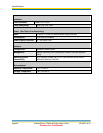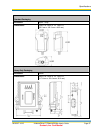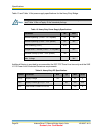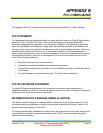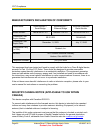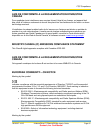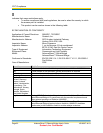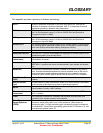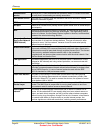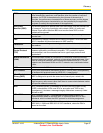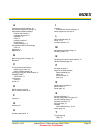
Glossary
100-8007-141G AirborneDirect™ Ethernet Bridge User's Guide Page 67
Quatech, Inc. Confidential
RTOS
An operating system implementing components and services that explicitly
offer deterministic responses, and therefore allow the creation of real-time
systems. An RTOS is characterized by the richness of the TTservicesTT it
provides, the performance characteristics of those services, and the degree
that those performance characteristics can be controlled by the application
engineer (to satisfy the requirements of the application).
Service Set
Identifier (SSID)
An identifier attached to packets sent over the wireless LAN that functions as
a "password" for joining a particular radio network (BSS). All radios and
Access Points within the same BSS must use the same SSID, or their
packets will be ignored.
Telnet
A virtual terminal protocol used in the Internet, enabling users to log into a
remote host.
TKIP
Temporal Key Integrity Protocol and is used in encryption. TKIP is an IEEE
802.11i standard and an enhancement to WEP security.
Transceiver
A device for transmitting and receiving packets between the computer and
the medium.
Transmission
Control Protocol
(TCP)
A commonly used protocol for establishing and maintaining communications
between applications on different computers. TCP provides full-duplex,
acknowledged, and flow-controlled service to upper-layer protocols and
applications.
Wide Area Network
(WAN)
A communication system of connecting PCs and other computing devices
across a large local, regional, national or international geographic area. Also
used to distinguish between phone-based data networks and Wi-Fi. Phone
networks are considered WANs and Wi-Fi networks are considered wireless
LANs.
Wi-Fi
Wi-Fi is a name for 802.11 wireless network technology.
Wi-Fi Alliance
A non-profit international association formed in 1999 to certify interoperability
of wireless LAN products based on IEEE 802.11 specification.
Wired Equivalent
Privacy (WEP)
A security protocol for wireless LANs defined in the IEEE 802.11 standard.
WEP is designed to provide the same level of security as a wired LAN.
WLAN
Also referred to as a wireless LAN. A type of Local Area Network that uses
high-frequency radio waves rather than wires to communicate between nodes
and provide network connectivity.
WPA
Wi-Fi Protected Access. It addresses all known Wired Equivalent Privacy
(WEP) vulnerabilities. WPA uses RC4 for encryption and TKIP for key
management. It includes a message integrity mechanism commonly called
Michael or MIC.
WPA-LEAP
Wi-Fi Protected Access - Light Extensible Authentication Protocol, an
implementation based on the IEEE 802.11i 2004 and IEEE 802.1X 2001
standards, which includes the LEAP protocol for initial key assignment.
WPA-PSK
Wi-Fi Protected Access - Pre-Shared Key, an implementation based on the
IEEE 802.11i 2004 and IEEE 802.1X 2001 standards, where the PSK is
stored on the client.



